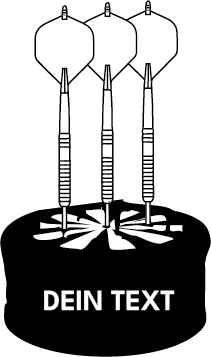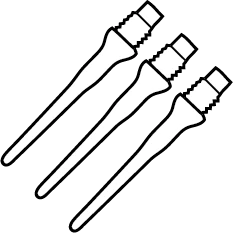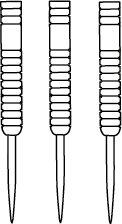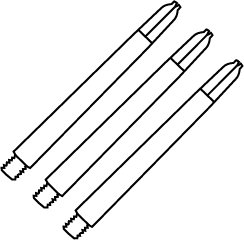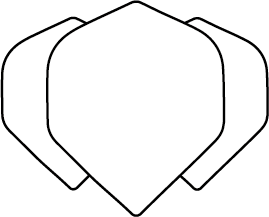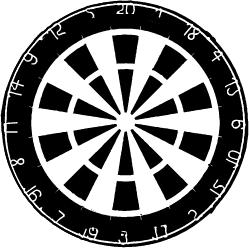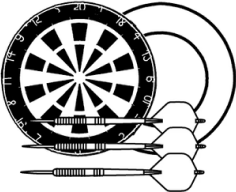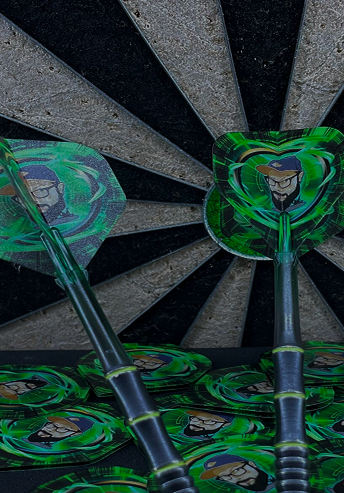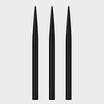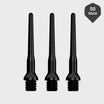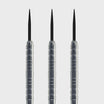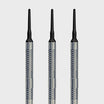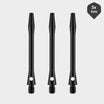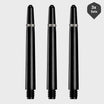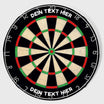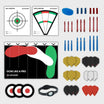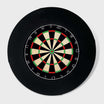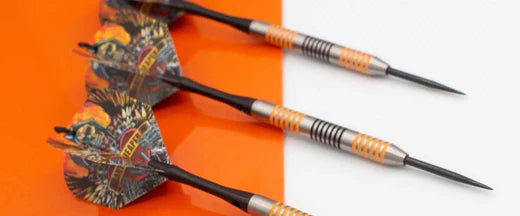
Lukas has been a darts fan since day one and a passionate darts player for over 10 years. After attending the 2016 Darts World Championship at the venerable Alexandra Palace with his future co-founder and then-flatmate Timm, it became clear to him: darts needed to become bigger and more popular in Germany, too. With myDartpfeil and the world's only dart configurator, every darts player—from beginner to professional—can create and customize their own perfect darts.
A dart is a unique piece of equipment for every dart player. The construction of a dart plays a crucial role, as the dart must match the player's throwing style .
In this blog post, we will discuss the dart construction and give you tips on how you can optionally expand or perfect your dart.
In addition to the typical components of a dart, there are several smaller components that are important for a good dart, but are often underestimated by players.
Nevertheless, the basic composition of the dart always remains the same: flight, shaft, barrel, tip – and this is exactly what makes the dart construction so interesting.
Although these four components are present in every arrow, there are huge differences in how an arrow floats in the air.
Dart construction – the most important components of a dart
The dart is a mystery in itself for many players. I once played the limited edition Phil Taylor Legacy Darts—the darts with which Phil Taylor became the record world champion in his sport, using similar darts throughout his career.
One thing became very clear to me: I personally wouldn't even be able to achieve an average of 40 points with this particular dart.
My point is: The most important thing in darts is that the device suits your throwing style—not the other way around. Many players often forget this and try to adapt their throwing style to a specific dart. This is the wrong approach.

How is a dart constructed? The construction of darts is always the same . The four main components , which every dart has, make up the basic composition:
- dart
- Flight
- Dart shaft
- Dart barrel
- Dart tip
However, there are several versions available for each of these dart components. This ensures that you can create your own individual and perfect dart configuration, as you can find in our dart configurator .
The tip of the dart – Grip & differences between e-darts and steel darts
Points are scored at the end with the tip of the dart – this is what the rules state. If the tip isn't in the board, the points don't count – that's the end.
For this very reason, you should make sure that your tips, at least with steel-tipped darts, have the necessary grip . They should also be sharpened with a whetstone from time to time to prevent them from falling out of the board. Even the material and length of the tips vary.
Players with a light throwing style should definitely make sure that the tips are sharpened regularly or use tips that are slightly ridged and therefore stay firmly stuck in the board.
Logically, e-darts require a plastic tip . However, there are differences here too. It makes sense to invest a little more to get sturdy tips instead of buying cheap ones that break easily.
The barrel on the dart – the heart of the dart construction
The barrel is considered the heart of the dart. Four important factors play a role in the barrel:
- Weight
- length
- Grip
- Point where you touch the dart
It is no longer a secret that the weight, length and grip of the barrel should be perfectly matched and also fit the player's throwing style.
However, one aspect of this topic is rarely discussed – the point at which the player grips the barrel .
One thing is particularly important here: The barrel 's center of gravity must be designed so that it maintains good balance when the player releases the dart. For example, if you're using a teardrop-shaped barrel (where the center of gravity of the dart is very far forward), you'll often grip the dart relatively far forward to maintain balance.
So if you tend to grip the barrel further back, it makes little sense to play a teardrop-shaped barrel . Try it yourself and you'll see exactly what this means.

The shaft on the dart – the length makes the difference
The shaft connects the flight, the lightest part of the dart, to the barrel, the heaviest part of the dart. It is important in that it significantly influences the length of the dart .
Because the shaft influences the length, it also affects the trajectory and even the speed of the arrow. While short arrows often fly quite fast , long arrows often glide through the air somewhat more slowly.
At this point I would like to give an example that illustrates the importance of the shaft on the dart:
- You have a rather loose throwing style and tend to cast based on feel . It makes sense to use a long shaft – at least to start with. A long shaft also provides stability in the throw, ideally in combination with a wide flight.
- However, if your throwing style is rather hard —meaning you pull your arm through and throw the arrow with a lot of force—then it makes sense to use a short shaft . The powerful release gives the arrow the speed it needs to fly straight. The short shaft increases the speed a little more. This causes the arrow to fly in a clean trajectory toward the board.

The flight on the dart – stabilizer of the flight path
The flight is essentially the end of the dart. To assemble a dart so that it flies straight through the air, the right flight is the key to success .
Players often wonder why their dart "wobbles" in the air or sticks in the board completely differently than intended. The flight is usually the culprit. Of all the dart components, it has the greatest influence on the trajectory , as it stabilizes the dart in the air .
Here again, it depends on the throwing style to find out which material and shape of the flight are best suited.
Wider or larger flights are often used by beginners. The large surface area of the flight stabilizes the dart extremely well in the air . Advanced players or professionals often adjust the shape of the flight slightly.
Narrow flights, in particular, are often used by experienced players. However, this is only possible once you have developed a clean and practiced throwing style that you can easily repeat. Until this is the case, it is recommended to use wider flights.

Optional extensions for individual dart construction
Last but not least, we would like to point out a few optional extensions that can be useful for a dart:
- Flight protector : This is placed on the end of the dart flight to prevent it from breaking after a short period of use. This is intended to extend its lifespan .
- Rubber ring : This is placed between the barrel and the shaft . It prevents the joint where the two parts are screwed together from repeatedly coming loose . Amateur players are particularly familiar with this annoying phenomenon when they have to repeatedly tighten this joint.

- Crown ring : Very useful for preventing darts from flying off plastic shafts after each shot . The flight simply needs to be punched and can then be securely attached to the shaft with this ring.
- Tridents: The Trident 180 caps are simply placed on conventional steel dart tips, creating the smoothest possible transition between tip and barrel and preventing possible bounces.
- Shaft caps: Shaft caps prevent the flight from slipping off the plastic shaft. Without the shaft caps, it becomes very annoying over time, as the flights frequently fall off.
There are also many other optional add-ons. Just try a few yourself and then create your own dart using our myDartpfeil configurator .
After you have the right dart setup
Now that you have the right dart and want to practice to improve, we recommend some previous blog articles on dart training .
We also recently released our own e-book . A complete book full of training tips, motivation, and a training plan. A must-have for every darts player!
Ready to upgrade your darts game? Discover everything you need to know about the best dart equipment and how it can boost your accuracy:
- The agony of choice: Dartboard made of cork or sisal ? An expert explains the pros and cons. Click here to find out more.
- Setting up a dart room Made easy thanks to cool tips and ideas » Click in now and create your own personal paradise at home.
- Changing and sharpening dart tips : Learn what's important and what you absolutely need to pay attention to here. Click here now!
Sofern nicht anders angegeben, unterliegt das im Beitrag gezeigte Bildmaterial mit Bezug zu Dartspielern und verwandten Themen dem Copyright der Professional Darts Corporation (© PDC).

